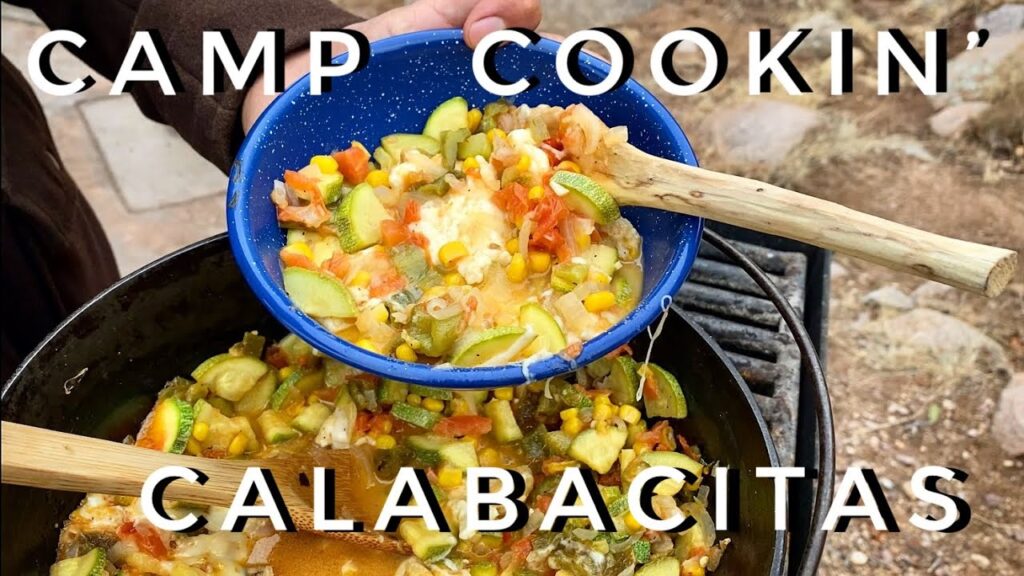The Genesis of Economical Kitchens in Mexico
The story of economical kitchens in Mexico is deeply intertwined with the country’s rich cultural and historical tapestry. These community-centric spaces have emerged from a longstanding tradition of collective food preparation and a shared understanding of the importance of mealtime. Initially, they served as communal areas where locals would come together to cook and share meals, often in response to economic hardships, creating a vibrant social space where everyone could enjoy a hearty meal regardless of their financial means.
Mexican economical kitchens, commonly known as «cocinas económicas,» became popular as an affordable alternative to eating out for the working class. Predominantly run by women, these kitchens offered a daily menu known as «comida corrida» which included a variety of home-cooked dishes. Staple foods such as beans, rice, and tortillas were accompanied by a main dish, often reflecting the regional flavors and cooking methods passed down through generations, offering a nutritious meal at a fraction of the cost of a restaurant.
The growth of these economical kitchens can be seen as a response to urbanization and the changing dynamics of Mexican family life. As more individuals migrated to cities and both parents started working outside the home, there was less time for traditional, labor-intensive meal preparations. In this context, economical kitchens provided a practical solution, affording busy workers the convenience of a home-cooked meal without the time investment typically required.
Focusing on low-cost ingredients and simplicity, economical kitchens optimized the use of locally sourced produce and seasonal items. This not only kept the costs down but also ensured meals were fresh and nutritionally balanced. The emphasis on simplicity and affordability did not detract from the taste or variety of the dishes served; rather, it showcased the ingenuity of Mexican cooks who could create delicious and satisfying meals from the most basic elements.
Today, these economical kitchens remain an integral part of Mexico’s culinary landscape, reflecting the resilience and creativity of the local communities. While menus have evolved over time, incorporating new flavors and influences, the core principles that established these kitchens remain the same: to provide a communal space where delicious, affordable food can bring people together, nourishing both body and spirit in times of need and plenty.
Discovering the Charm of Mexico’s Three-course Meals
Mexico’s culinary landscape is as vibrant and diverse as its bustling markets and colorful streetscapes. Embarking on a gastronomic journey to discover the regional specialties in the form of three-course meals offers a pathway to understand the essence of Mexican culture. Typically, a traditional three-course meal—or «comida corrida»—will guide you through a tasting odyssey from fresh appetizers to hearty entrees, finishing with a sweet or savory dessert that embodies the nation’s penchant for flavor complexity.
The adventure begins with a tantalizing starter, which might be a zesty soup like «sopa de lima» or a refreshing «ceviche» made with locally caught fish marinated in lime juice, spiced with chili peppers, and garnished with avocado. These introductory dishes awaken the palate and set the scene for what’s to come, showcasing regional ingredients and the ingenuity of Mexican kitchen traditions. They are often served with tortilla chips and paired with homemade salsas that range from mild to tear-inducing spiciness.
Proceeding to the main course, meat lovers will rejoice in dishes like «mole poblano», a rich sauce of chocolate and chili that adorns succulent chicken, or «cochinita pibil»—slow-roasted pork marinated in citrus and annatto seeds, wrapped in banana leaves for an infusion of earthy flavors. Meanwhile, vegetarians might delight in «chiles en nogada», poblano chilis stuffed with picadillo and drizzled with walnut-based cream sauce, adorned with pomegranate seeds representing the colors of the Mexican flag.
Concluding the meal, the Mexican three-course voyage would not be complete without sampling the diverse desserts. Whether it’s the caramel-soaked «flan» that gently quivers on the plate or the crispy «churros» coated in cinnamon sugar ready to be dunked in hot chocolate or dulce de leche, desserts are an essential punctuation to the flavor story. Each sweet bite is a reflection of Mexico’s history, combining indigenous ingredients with culinary influences from Europe and beyond.
While reveling in these multi-course delights, it is customary to sip on local beverages that complement the dining experience. A frothy «horchata»—a sweet rice milk beverage sprinkled with cinnamon—or a potent shot of «mezcal,» with its smoky undertones, can elevate the flavors of each dish. Embracing the combination of food and drink is key to appreciating the full spectrum of sensations that Mexican three-course meals have to offer.
Affordable Culinary Delights: Mexico’s Budget-Friendly Eats
Mexico is a treasure trove of culinary experiences that suit every budget, especially for those who have a penchant for exploring local cuisines without breaking the bank. From the bustling street stalls of Mexico City to the vibrant markets of Oaxaca, each region boasts its own unique flavors and dishes that reflect the rich cultural tapestry of the country. For the savvy traveler, these budget-friendly eateries are not only a feast for the taste buds but also a window into the heart of Mexican culture.
Street food, without a doubt, forms the backbone of Mexico’s affordable culinary scene. Iconic dishes such as tacos, tamales, and quesadillas can be found for a few pesos, and they provide a quick, delicious meal on the go. Each vendor often specializes in a specific dish, perfected over years, if not generations. The smoky scent of grilled meats, the vibrant colors of freshly made salsas, and the warm tortillas are a hallmark of Mexico’s street food allure.
Another highlight for budget-conscious food lovers is the local markets, known as «mercados». Here, amidst the chaos and clamor, one can indulge in a plethora of dishes such as ceviche, pozole, and chiles rellenos at prices that are significantly lower than in restaurants. These markets also offer the perfect opportunity to experiment with different flavors, as each stall provides its own culinary twist on traditional recipes.
For those with a sweet tooth, Mexican dulces offer a delightful and inexpensive way to enjoy the country’s confectionery. From churros dipped in hot chocolate to the variety of local candies made from tamarind and chili, these treats are often found for pennies, allowing travelers to savor the sweeter side of Mexico’s gastronomy without feeling the pinch on their wallet.
The Impact of Economical Kitchens on Mexico’s Food Culture
In Mexico, the concept of «Cocinas Económicas,» or economical kitchens, has become a cornerstone in both home cooking and street food culture. These small, often family-run eateries can be found throughout the country, offering hearty, home-cooked meals at affordable prices. The presence of economical kitchens has significantly shaped Mexico’s food landscape, making wholesome, traditional meals accessible to a broader demographic.
Economical kitchens, though modest in appearance, are treasure troves of authentic Mexican cuisine. They proliferate in bustling markets, residential neighborhoods, and even in transit hubs, serving up an array of dishes that reflect the culinary diversity of Mexico. Behind their counters, one often finds seasoned cooks who have spent a lifetime mastering regional recipes. This accessibility to made-from-scratch meals supports the preservation of traditional cooking methods, which might otherwise be overlooked in favor of faster, more modern conveniences.
The affordability of meals in these kitchens has played a crucial role in sustaining the everyday Mexican worker. For many, grabbing a «comida corrida,» a type of fixed-price lunch menu, from a local economical kitchen is both a time-saving and budget-friendly way to enjoy a nutritious midday meal. This tradition underlines the egalitarian nature of Mexico’s food culture, where good food is not seen as a luxury but a daily pleasure to be enjoyed by all.
Moreover, economical kitchens offer a communal space that strengthens social bonds. Sharing a bench with others and enjoying a meal together goes beyond simple nourishment; it’s an act that weaves solidarity into the fabric of daily life. These kitchens often become informal hubs of community activity, where news is exchanged, friendships are forged, and the local economy is stimulated by supporting neighborhood businesses.
Moving beyond Mexico’s borders, the model of economical kitchens has influenced food culture internationally. The concept of affordable, homestyle meals resonates with the global community, inspiring food vendors and restaurants worldwide to replicate the format. The spread of this culinary ethos underscores the universal desire for food that is not only economical but also rich in cultural significance and flavor.
A Guide to Mexico’s Best Economical Kitchens and Their Menus
Exploring Mexico’s culinary scene doesn’t have to be expensive. In fact, some of the most authentic and delicious experiences can be found in its “cocinas económicas” – modest eateries often run by local families. These hidden gems offer hearty home-cooked meals that are both affordable and reflective of Mexico’s rich culinary traditions. From the bustling streets of Mexico City to the colorful facades of Oaxaca, you’ll stumble upon a myriad of economic kitchens that serve up traditional dishes with recipes that have been passed down through generations.
The menus in these economical kitchens, or «comedores», are typically written on a chalkboard or recited by the servers and change daily depending on available fresh ingredients. Staples such as «tacos,» «tortas,» «quesadillas,» and «sopes» are common, with fillings ranging from «carnitas» (braised pork) to «tinga de pollo» (spicy shredded chicken). The «plato del día» (dish of the day) often features heartier options like «mole con pollo» (chicken in a rich, chocolate-spiced sauce) or «chiles rellenos» (stuffed peppers), usually accompanied by a pile of warm handmade tortillas.
In a typical economical kitchen, breakfast menus boast an array of «huevos» (eggs) prepared in various local styles, such as «huevos rancheros» (fried eggs on tortillas with salsa), «huevos a la Mexicana» (scrambled eggs with tomatoes, onions, and chilies), and «chilaquiles» (tortillas cut in quarters and lightly fried with red or green salsa). Pair these with a cup of «café de olla» (traditional Mexican spiced coffee) or «agua fresca» (a fresh fruit drink), and you have a perfect start to your adventurous day.
Dinner in these kitchens keeps the ambiance lively with the bustling sounds of clinking plates, sizzling pans, and the chatter of satisfied diners. As night falls, menus often highlight «antojitos» (Mexican snacks), perfect for sharing with friends over a «cerveza» (beer) or «pulque» (an alcoholic beverage made from the fermented sap of the maguey plant). These small plates can include «tostadas» (crispy tortillas topped with various ingredients), «flautas» (rolled tortillas filled with meat and deep-fried), and perhaps the most iconic, «tacos al pastor» (tacos with spit-grilled pork). Indulging in these dishes offers a taste of the vibrant Mexican nightlife, without putting a dent in your wallet.


